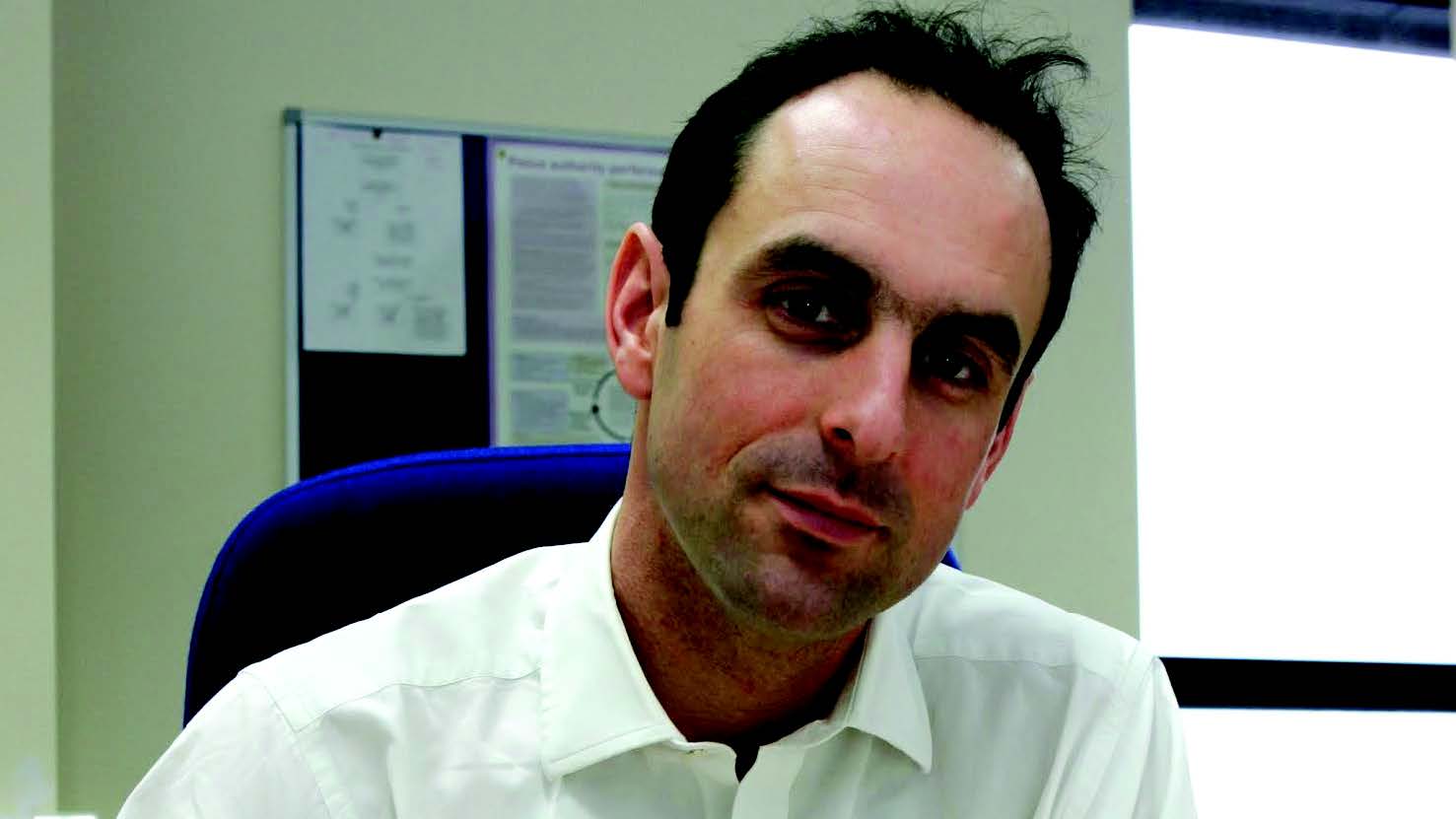News
‘Be fair’ on funding for rural policing


Christopher Salmon: Front-line police are safe
CONSERVATIVE MPs and the Police and Crime Commissioner for Dyfed Powys have written to the Home Secretary expressing concerns about planned changes to funding allocation across the police force.
The letter, which has been signed by Carmarthen West and South Pembrokeshire MP Simon Hart, as well as Glyn Davies and Chris Davies, and Christopher Salmon, urges Theresa May to ‘support fair funding for rural areas’.
The letter goes on to say that ‘measures proposed as part of the formula focus heavily on density. Deprivation, measured by people living in flats, for example, or estate density, does not reflect rural reality well. Flats may be less common in rural areas, and estates less dense, but the deprivation is just as real. Bar density measured by the hectare seriously misunderstands Dyfed- Powys. The force covers 1m hectares, twice the size of Thames Valley Police. The majority of these hectares are agricultural where bars are clearly not a problem. In towns where bars and clubs are concentrated, however, alcohol has much the same effect as elsewhere. A ‘per hectare’ formula misses this.’
At present, Police funding is allocated based on the Police Allocation Formula. This is based on the estimated workload of each police force area, and covers:
- C rime related activity
- N on-crime activity (eg providing public reassurance or road traffic accident assistance)
- P olicing special events
- P olicing sparsely-populated areas
- W orkload weighting calculation for cost and time which include an area cost adjustment for variation in labour market costs in different areas.
The proposed new funding model will ‘be based on three broad levels that capture the drivers of crime and demand on police time,’ according to the review. These are:
- Population levels
- The underlying characteristics of the local population
- The environmental characteristics of police force areas.
The police budget has already been reduced by as much as 26% over the last five years, and any changes in the way that this money is allocated could have serious repercussions for policing in rural areas.
In an exclusive interview with The Herald, Christopher Salmon explained why he shared his concerns with the Home Secretary, and reaffirmed his commitment to protecting front-line policing.
Mr Salmon said that the proposed budget changes were based on two separate things; a comprehensive spending review which will reduce the overall budget by between 25 and 40 percent, and a review of the formula, which decides how the money is allocated. This second part could have a potentially serious impact on Dyfed Powys Police force.
“I was very keen, along with my parliamentary colleagues to make the case for rural police forces,” he said, pointing out that they faced very different challenges, including the need to keep buildings open, and greater fuel costs. “I don’t work for the Home Office, I work for the people of Dyfed-Powys,” he added.
Police Minister Mike Penning has previously said: “The current model for allocating police funding is complex, opaque and out of date. This consultation sets out proposals to deliver a police funding model for the future which is fair, robust and transparent.”
Mr Salmon agreed with this synopsis: “The formula does need changing, no one disputes that. It is opaque and we need clarity. As P&CC I am responsible for all money spent.
“It is right that they change it, my concern is that the formula is fair to rural areas.”
When we quoted figures suggesting that the police budget had already been cut by 26% in the last five years, Mr Salmon thought that the figure was nearer to 20%, but agreed that significant cuts had been made.
In terms of future reductions, he said “Civil service departments will be asked to provide models, but in Dyfed Powys we are anticipating cuts of 5.5% per year.”
When we asked what the effects of these hypothetical cuts would be, Mr Salmon told us that he believed Dyfed Powys Police force could still make ‘significant savings.’
“These would be in the area of management – less ‘bosses in the office’, he said. “We could also work more closely with other bodies like the fire and rescue service.
Mr Salmon insisted that whatever reductions were made, front line policing would be protected.
“As long as I’m in the job, I will protect front-line services. Dyfed- Powys has already made savings of £8.8m, at the same time as recruiting 30 extra officers. Crime and anti-social behaviour have gone down by 12%
When we asked about comments made by the Chief Constable of North Wales Mike Polin, who said that the Police force would “bear the brunt” of Home Office budget cuts, Mr Salmon said that he was broadly right, in that the police force received the largest part of the Home Office Budget, but he stressed that it was up to the Home Office to decide where they made their savings.
We pointed out to Mr Salmon that while the police force across the country has been reduced in size by around 17,000 police officers and 3,000 PCSOs over the last 5 years, Dyfed Powys has actually increased the size of their front-line force.
“That’s down to better management and better leadership,” he said.
As an example of savings made that have seemed unpopular, we asked Mr Salmon about the cessation of monitored CCTV in Carmarthen Town Centre.
“I completely understand people may seem nervous about changes, but there was no evidence to support CCTV monitoring. This year crime rates in Carmarthen are down,” he said.
“I make these difficult decisions to protect front line policing, and I will continue to do this for as long as I am in the job.”
Crime
Emergency bags rolled out to support domestic abuse victims across Dyfed-Powys

Thirty packs provide immediate help for families fleeing dangerous situations
A NEW initiative aimed at supporting victims of domestic abuse has seen thirty emergency bags distributed for use across the Dyfed-Powys Police area.
The bags, which contain essential items including toiletries, non-perishable snacks and emergency supplies, are designed to offer immediate practical support to individuals and families forced to flee abusive situations, often with little or nothing.
The scheme forms part of the Police and Crime Commissioner’s wider commitment to improving outcomes for victims and is being delivered in partnership with Dyfed-Powys Police and Dal i Godi, the commissioned Independent Domestic Violence Adviser (IDVA) service.
Dal i Godi provides specialist support to victims at high risk of serious harm, including safety planning and advocacy through the criminal justice process.
Police and Crime Commissioner Dafydd Llywelyn said the initiative was already proving its value.
“This is an incredible initiative that I’m proud to support,” he said. “It provides meaningful help to those experiencing trauma and reflects our ongoing work to put victims first.
“Within just a few days of the bags being distributed to the Dal i Godi service, one was given to a victim fleeing a domestic abuse situation, along with a children’s pack to support their young family. That shows just how essential this support can be and how quickly it can make a difference.”
Detective Chief Inspector Llyr Williams, from the Dyfed-Powys Police Vulnerability Hub, said the emergency bags could provide a vital lifeline at critical moments.
“These emergency bags offer support at some of the most difficult moments in a person’s life,” he said.
“The contents provide immediate comfort, dignity and practical help for those leaving their homes in crisis. While simple, they represent an important first step towards safety and recovery.
“We are proud to be working with partners across the Dyfed-Powys area to ensure this support reaches people when they need it most.”
Anyone experiencing domestic abuse, or concerned about someone else, is encouraged to seek help. In an emergency, call 999.
Domestic abuse can also be reported online via Dyfed-Powys Police.
Support services available include Victim Support Dyfed-Powys, which offers free and confidential help to anyone affected by crime, whether or not it has been reported, and Dal i Godi, which provides specialist IDVA support for high-risk victims.
The Live Fear Free Helpline offers 24-hour support for those experiencing domestic abuse or sexual violence across Wales.
If you or someone you know is a victim of domestic abuse, please consider reporting it. If you are in danger or need support right away, please call 999.
You can report domestic abuse through the online crime reporting service here: Report domestic abuse | Dyfed-Powys Police.
Support is also available via the below support services:
Victim Support Dyfed-Powys
Free, independent support for anyone affected by crime in the Dyfed-Powys area, whether or not it has been reported to the police.
0300 123 2996
Dal i Godi (IDVA Service)
Specialist support for victims of domestic abuse at high risk, offering safety planning, emotional support, and advocacy with agencies such as police and courts.
01267 221194
Live Fear Free Helpline
24/7 support for anyone experiencing domestic abuse or sexual violence.
0808 80 10 800 | Text 07860 077333
News
Welsh-language school praised for ‘happy, proud and friendly community’

Estyn highlights strong leadership, positive attitudes and a clear curriculum vision at Ysgol Bro Preseli
A WELSH-medium all-age school in Crymych has been praised by inspectors for fostering a “happy, proud and friendly community,” according to a recent Estyn report.
Inspectors said pupils at Ysgol Bro Preseli show pride in their local area, thrive both academically and socially, and are well prepared for the next stages of their learning.
The school currently has 932 pupils on roll, including 118 in the sixth form, and has operated as an all-age school since 2022.
Estyn found that most pupils demonstrate extremely positive attitudes to learning, treat staff with respect, and listen carefully to the contributions of their peers.
The report also notes that, in almost all cases, teachers show strong subject knowledge. Inspectors highlighted the close and supportive relationships staff build with pupils, alongside the creation of a safe learning environment where pupils are not afraid to make mistakes.
It states: “As a result of a clear strategic direction and detailed planning, teachers provide beneficial practical activities that allow pupils to develop purposeful oracy, reading and writing skills in language sessions and across the other areas of learning and experience.”
Inspectors also praised the school’s clear curriculum vision, rooted in its motto Gwreiddiau a Gorwelion (Roots and Horizons).
“Leaders and teachers provide a coherent curriculum and learning experiences that bridge the primary and secondary sectors effectively,” the report said. “Staff plan stimulating activities and experiences for pupils to learn and deepen their understanding within the areas of learning and experience. This contributes positively to the sense of belonging that permeates the whole curriculum of Ysgol Bro Preseli.”
Headteacher Rhonwen Morris said the report was a reflection of the collective effort across the school community.
“As a successful all-age Welsh-medium school, we are delighted that the report recognises our commitment to excellence and the unique identity that makes Ysgol Bro Preseli so special,” she said.
“Since becoming an all-age school in 2022, our cohesive leadership team and governing body have focused on building a strong foundation based on our values of Welsh ethos, kindness, community and responsibility.
“The report highlights the excellent strategic work of staff at all levels, which is a testament to the shared dedication and vision that drives our school forward.
“It is gratifying that the report reflects what we continuously aim to achieve day in and day out. This achievement belongs to our entire community — staff, pupils, parents and governors — and together we will continue to build on this success and provide the very best education for every pupil.”
Charity
Welsh opticians raise £1,600 for people experiencing homelessness

SPECSAVERS Pembroke Dock has helped raise £1,600 to support people experiencing homelessness this winter, with all funds going to The Wallich’s winter appeal.
Thirteen stores from North, South and West Wales donated £1 for every customer feedback form completed during November to help The Wallich, Wales’ largest homelessness and rough sleeping charity, continue its vital work.
Supporting more than 8,000 people experiencing or at risk of homelessness across the nation each year, The Wallich runs around 100 diverse projects across 20 local authorities to provide hope, support and solutions to end homelessness.
Funds raised by Specsavers will go directly to the Wallich’s Flexible Assistance Fund, which provides small but vital emergency grants. The grants support people at crucial turning points, helping cover essential costs such as phone credit, rent or food shops.
This initiative is a continuation of Specsavers’ wider homelessness programme, which sees over a hundred Specsavers stores and Home Visits services hold out-of-hours or pop-up clinics and invite people affected by forms of homelessness to use their services for free.
Specsavers’ North Wales regional relationship manager, Martin Lawrence, who helped organise the fundraiser, says: ‘We’re really proud to be supporting The Wallich’s winter appeal at a time when support is needed most.
‘Homelessness affects people in every community and as locally owned and run businesses, Specsavers stores are committed to raising awareness of the issue and supporting people through their toughest moments.
‘We’re excited to build on the success of this fundraiser and strengthen our partnership with The Wallich in the new year.’
Louisa Turner, head of fundraising at The Wallich, adds: ‘Winter can be an incredibly difficult time for people experiencing homelessness and this support from Specsavers will make a real difference.
‘The funds raised will help provide emergency grants at critical moments – whether that’s putting food on the table, helping someone stay connected with their loved ones or preventing someone from losing a safe place to live.
‘This kind of support creates vital turning points and helps people move towards a safer, more secure future.’
Specsavers works year-round with homelessness charities including Crisis, Vision Care and The Big Issue, to improve access to healthcare and advocate for policy change – ensuring people experiencing homelessness can receive free eye tests, glasses and hearing checks.
To find out more about Specsavers or to book an appointment at your local store, visit: https://www.specsavers.co.uk/stores.
-

 Crime2 days ago
Crime2 days agoMilford Haven man jailed after drunken attack on partner and police officers
-

 News5 days ago
News5 days agoDyfed-Powys Police launch major investigation after triple fatal crash
-

 Crime2 days ago
Crime2 days agoTeenager charged following rape allegation at Saundersfoot nightclub
-

 Crime3 days ago
Crime3 days agoMan charged with months of coercive control and assaults
-

 Crime4 days ago
Crime4 days agoMan sent to Crown Court over historic indecent assault allegations
-

 Crime6 days ago
Crime6 days agoMan spared jail after baseball bat incident in Milford Haven
-

 Crime4 days ago
Crime4 days agoMilford Haven man admits multiple offences after A477 incident
-

 Crime3 days ago
Crime3 days agoWoman ‘terrified in own home’ after ex breaches court order



















